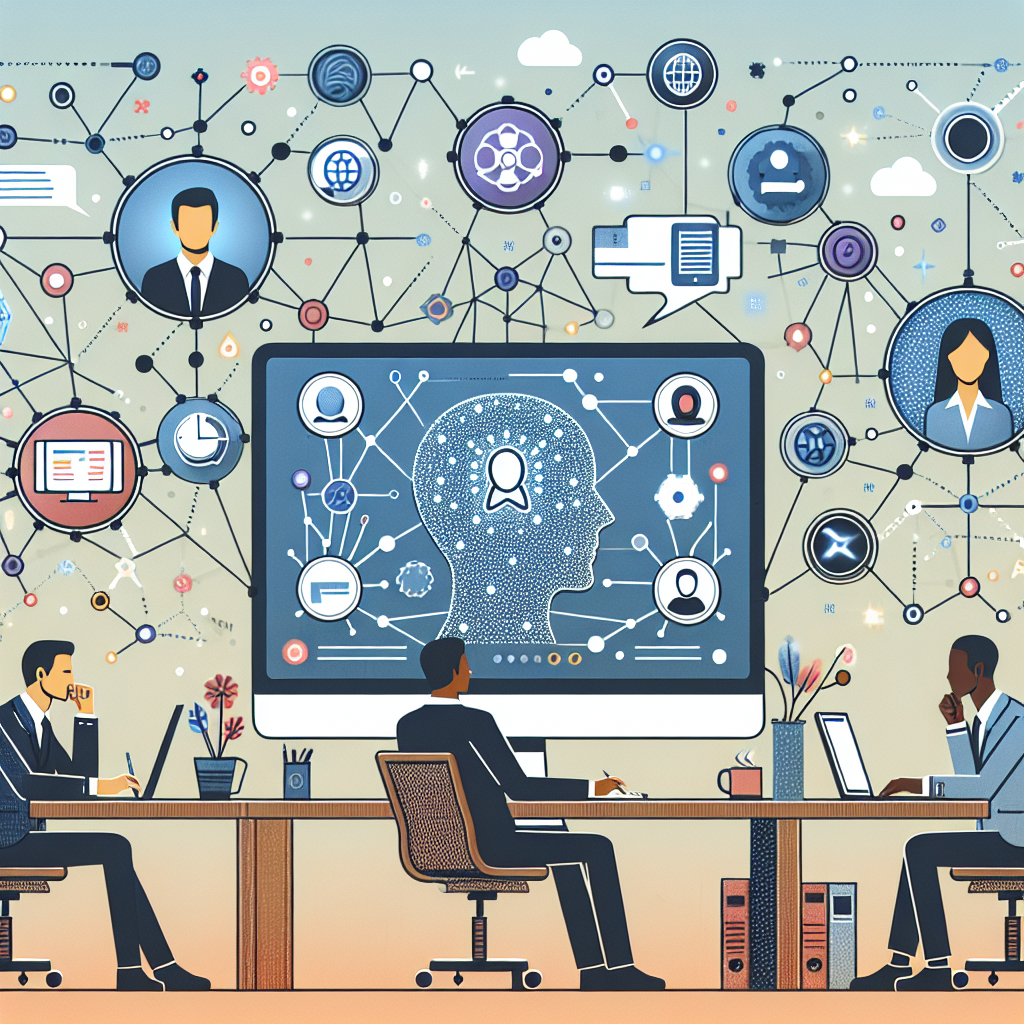The Role of AI-Driven Solutions in Remote Work and Collaboration
In recent years, there has been a significant shift towards remote work and collaboration. This trend has been accelerated by the COVID-19 pandemic, which forced many organizations to adopt remote work arrangements to ensure the safety of their employees. As a result, businesses have had to find new ways to communicate, collaborate, and manage their teams from a distance. This is where AI-driven solutions come into play.
Artificial Intelligence (AI) has rapidly emerged as a powerful tool for enhancing remote work and collaboration. AI-driven solutions can automate tasks, streamline processes, analyze data, and provide valuable insights to help teams work more efficiently and effectively. In this article, we will explore the role of AI-driven solutions in remote work and collaboration, and how they can benefit businesses and employees alike.
1. Virtual Assistants
One of the most popular applications of AI in remote work is virtual assistants. These AI-driven tools can help employees manage their tasks, schedule meetings, set reminders, and even answer questions. Virtual assistants can also be integrated with other tools and platforms to provide a seamless experience for users. By automating routine tasks and providing real-time assistance, virtual assistants can help employees stay organized and focused, even when working remotely.
2. Collaboration Tools
AI-driven collaboration tools are another key component of remote work. These tools can facilitate communication, project management, file sharing, and team collaboration in a virtual environment. AI-powered chatbots, for example, can help teams communicate more efficiently by providing instant answers to common questions and guiding users through complex tasks. AI-driven project management tools can also help teams track progress, allocate resources, and identify potential issues before they escalate.
3. Data Analysis
AI-driven solutions can also play a crucial role in analyzing data to provide valuable insights for remote teams. By processing large volumes of data quickly and accurately, AI can help teams identify trends, patterns, and anomalies that may not be apparent through manual analysis. This can help teams make more informed decisions, optimize their processes, and improve their overall performance.
4. Employee Engagement
AI-driven solutions can also help businesses engage and motivate their remote employees. By analyzing data on employee behavior, sentiment, and performance, AI can help managers identify areas where employees may need support or recognition. AI-driven feedback tools can also provide real-time feedback to employees, helping them improve their skills and performance. This can help businesses maintain a positive and productive work culture, even in a remote setting.
FAQs
Q: How can AI-driven solutions enhance remote work and collaboration?
A: AI-driven solutions can automate tasks, streamline processes, analyze data, and provide valuable insights to help teams work more efficiently and effectively. Virtual assistants can help employees manage their tasks, schedule meetings, set reminders, and answer questions. Collaboration tools can facilitate communication, project management, file sharing, and team collaboration. Data analysis tools can provide valuable insights for remote teams, helping them make more informed decisions and improve their performance. Employee engagement tools can help businesses engage and motivate their remote employees, ensuring a positive and productive work culture.
Q: What are some examples of AI-driven solutions for remote work and collaboration?
A: Some examples of AI-driven solutions for remote work and collaboration include virtual assistants, collaboration tools, data analysis tools, and employee engagement tools. Virtual assistants can help employees manage their tasks and schedule meetings. Collaboration tools can facilitate communication, project management, file sharing, and team collaboration. Data analysis tools can provide valuable insights for remote teams. Employee engagement tools can help businesses engage and motivate their remote employees.
Q: How can businesses implement AI-driven solutions for remote work and collaboration?
A: Businesses can implement AI-driven solutions for remote work and collaboration by identifying their specific needs and objectives, evaluating different AI solutions in the market, and selecting the ones that best fit their requirements. They can then integrate these solutions into their existing workflows and processes, provide training and support to employees, and monitor the performance and impact of these solutions over time. By leveraging AI-driven solutions effectively, businesses can enhance their remote work and collaboration capabilities, improve their productivity and efficiency, and stay competitive in a rapidly evolving business landscape.
In conclusion, AI-driven solutions are playing an increasingly important role in enhancing remote work and collaboration. By automating tasks, streamlining processes, analyzing data, and providing valuable insights, AI can help teams work more efficiently and effectively in a virtual environment. Virtual assistants, collaboration tools, data analysis tools, and employee engagement tools are just some examples of how AI can be applied to remote work and collaboration. By implementing AI-driven solutions effectively, businesses can enhance their remote work capabilities, improve their productivity and efficiency, and stay competitive in a rapidly evolving business landscape.

